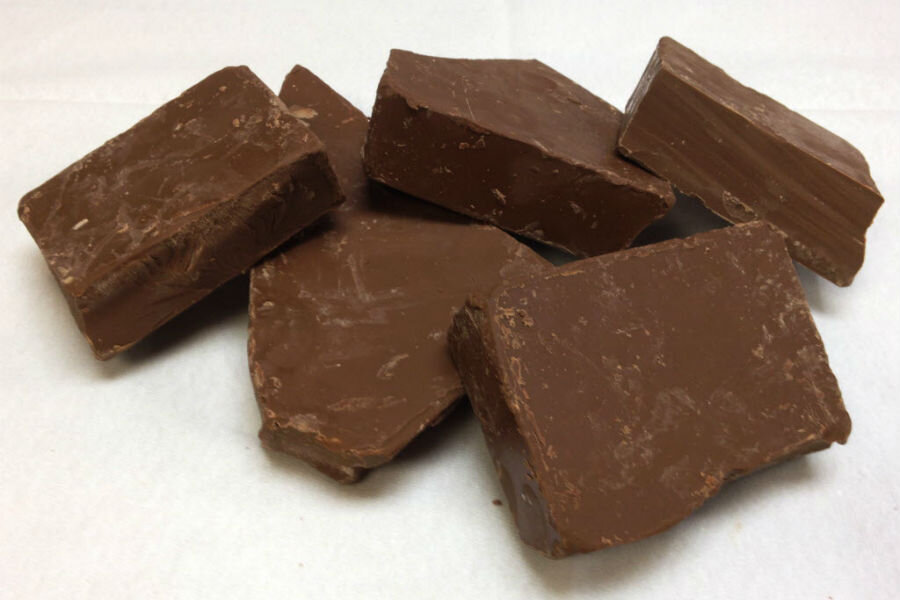Chocolate with less fat? Scientists make shocking discovery.
Loading...
Can you take the fat out of chocolate? A Temple University study published last week finds that electric currents can reduce the fat content of milk chocolate by up to 20 percent.
The group began studying how electricity can improve the viscosity of chocolate without adding extra cocoa butter in 2012 after a consulting firm working for Mars, Inc. approached Rongjia Tao, professor of physics at Temple and chief investigator of the study. That experiment led to curiosity about whether electricity can also cut the fat in chocolate and yet keep it viscous.
To achieve low-fat chocolate without using low-calorie fat substitutes that are banned in Canada and western Europe, “new technology based on new soft matter science is critically needed,” write Dr. Tao and his colleagues in the study. “In this paper, we report that unconventional electrorheology (ER) provides a solution for this critical outstanding issue.” “Electrorheology leads to healthier and tastier chocolate” was published by the Proceedings of the National Academy of Sciences of the United States of America.
Throughout the manufacturing process, chocolate is in a liquid state. Traditionally, cocoa butter and fat are essential for keeping the viscous combination of spherical cocoa solids, sugar, and mixed solids flowing, but Tao’s findings may make the oil superfluous.
This experiment takes advantage of chocolate’s “smart fluid” characteristics. “Smart fluids” are those whose viscosity can continuously and rapidly respond to electric shocks. Machine oils are also “smart." In his study, Tao took advantage of this property of chocolate to simultaneously reduce the viscosity of liquid chocolate to decrease fat content and increase the density of its particles to maintain its flow along the production line.
Tao and his colleagues found that applying the electric field parallel to the chocolate flow – instead of perpendicularly, as is usually done in electrorheology – changes the alignment of the chocolate particles.
The microstructure of the particles changes from spherical to oblong, or prolate spheroidal. These new electrocuted particles “aggregate into short chains” with long axes pointing in the flow direction, Tao and his colleagues write. The flatter shape of these particles increases the chocolate’s density and the accumulation of chains “breaks the rotational symmetry” and thus decreases the chocolate’s viscosity, which improves the chocolate’s flow, according to the paper.
There remains some room for improvement, the study claims. “In our ER treatment we have not reached the optimal solution for viscosity reduction; some particles may not be aggregated into short chains.” The study suggests that finding the right electric field strength and time for chocolate to remain in the electric field would achieve the greatest amount of fat extraction and lowest viscosity.
But here's the $21-billion question (the amount Americans spend on chocolate every year, according to the National Confectioners Association): How does it taste?
Although some of those associated with the study did taste the chocolate, the group did not conduct wider ranging tests on taste. The study concludes by saying, “Some people ... claim that the ER-treated chocolate has a slightly stronger cocoa solid flavor, better than the original chocolate.”
Without the cocoa butter, however, the chocolate could also be more powdery, brittle, and stringent, John Hayes, a food scientist and director of the Sensory Evaluation Center at Penn State University, told NPR.
The public may soon have a chance to judge for itself. The researchers are now working with a “major chocolate company” to bring the low-fat chocolate to the market, Tao told NPR.






